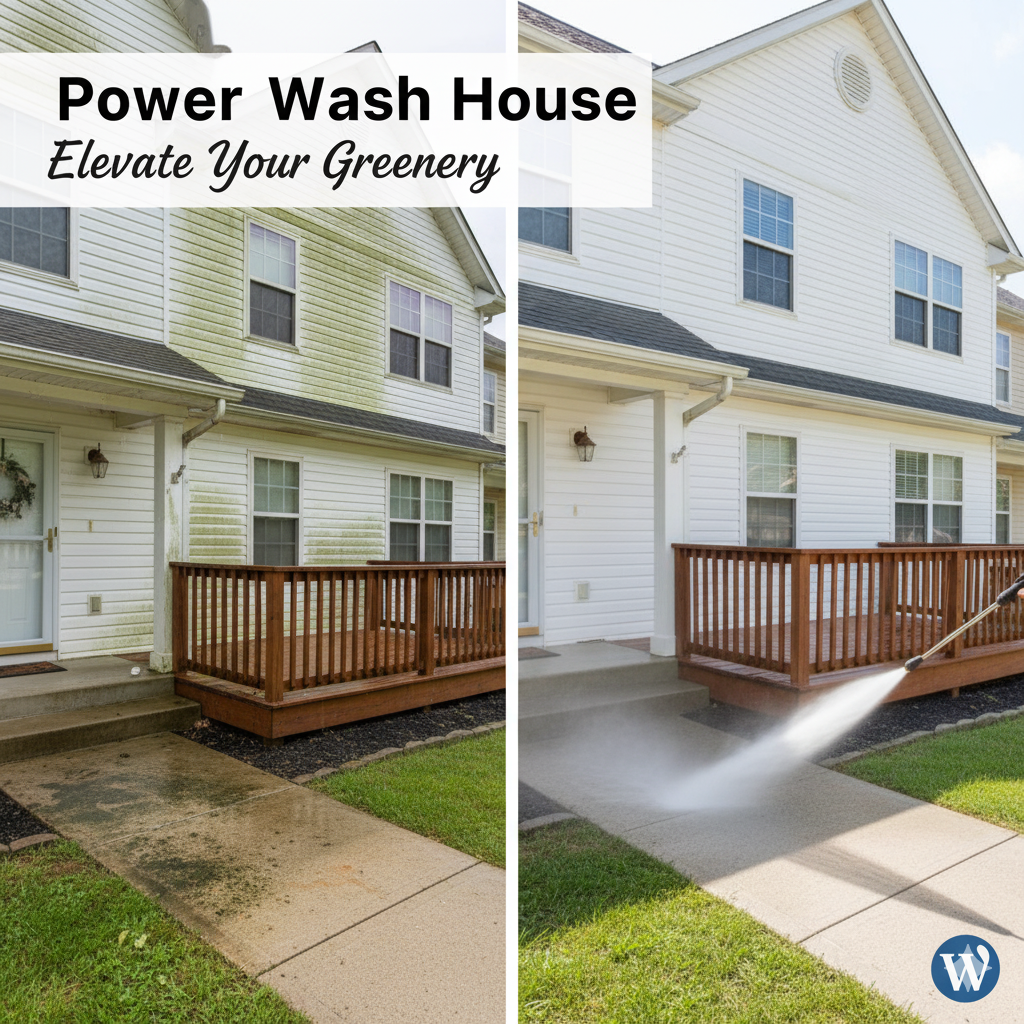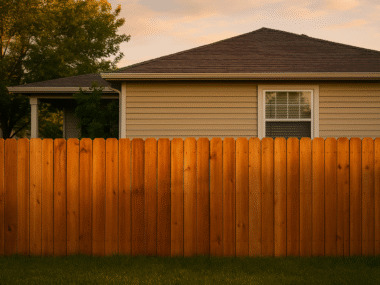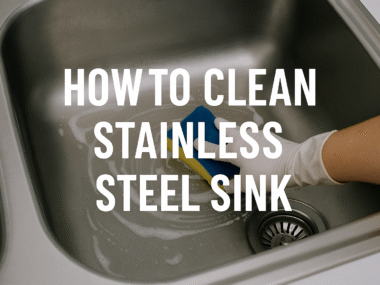Power Wash House
Is your home’s exterior looking dull, dirty, or discolored? Over time, dirt, grime, mold, mildew, and other unsightly build-ups can accumulate on your siding, driveway, and walkways, diminishing your home’s curb appeal and potentially causing long-term damage. The solution? Power washing! Power wash house is a highly effective way to restore its pristine appearance, protect its surfaces, and even increase its value. In this comprehensive guide, we’ll walk you through everything you need to know about power washing your home, from understanding the benefits to mastering the techniques.
Power Washing Your House: More Than Just a Clean
Power washing, also known as pressure washing, uses a high-pressure stream of water to remove loose paint, mold, grime, dust, mud, and dirt from surfaces and objects such as buildings, vehicles, and concrete surfaces. While it might seem like a simple cleaning task, power washing offers a multitude of benefits for your home:
Benefits of Power Washing Your Home:
- Boosts Curb Appeal: A clean exterior instantly makes your home look more inviting and well-maintained. Power washing removes years of accumulated dirt and stains, making your house stand out.
- Increases Home Value: If you’re planning to sell your home, power washing is a cost-effective way to boost its market value. A sparkling clean exterior makes a great first impression on potential buyers.
- Prevents Damage & Costly Repairs: Mold, mildew, and algae can eat away at your home’s exterior surfaces over time, leading to rot, discoloration, and eventual damage. Power washing eliminates these harmful elements before they can cause significant problems.
- Healthier Environment: Mold and mildew can trigger allergies and respiratory issues for your family. By removing these allergens, power washing contributes to a healthier living environment.
- Prepares for Renovation: Planning to repaint your house or reseal your deck? Power washing is an essential first step. It cleans the surface thoroughly, ensuring better adhesion for paint or sealant and a longer-lasting finish.
- Extends Lifespan of Surfaces: Regular power washing can extend the life of your siding, driveway, deck, and other outdoor surfaces by preventing degradation caused by organic growth and contaminants.
Is DIY Power Washing Right for You?
While power washing can be a DIY project, it’s crucial to understand the risks and necessary precautions. Incorrect technique can lead to serious damage to your home’s siding, windows, and landscaping, or even personal injury.
When to Consider Professional Help:
- Extensive Mold/Mildew: If you have severe mold or mildew growth, professionals have specialized detergents and techniques.
- Delicate Surfaces: Old homes, painted surfaces, or delicate materials like stucco might require a “soft wash” approach, which professionals are skilled in.
- High Areas: Reaching high gables or multi-story homes safely requires professional equipment and expertise.
- Time Constraints: If you lack the time or inclination for a DIY project, hiring a professional is a convenient option.
Essential Equipment for Power Washing Your House
If you decide to tackle the job yourself, here’s the basic equipment you’ll need:
- Pressure Washer:
- Electric Pressure Washers: Good for smaller jobs, lighter dirt, and more delicate surfaces. They are quieter, lighter, and require less maintenance. (e.g., 1300-2000 PSI)
- Gas Pressure Washers: More powerful, ideal for larger homes, tough stains, and harder surfaces like concrete. They are louder and heavier. (e.g., 2000-4000+ PSI)
- PSI (Pounds per Square Inch): Indicates the water pressure.
- GPM (Gallons Per Minute): Indicates the water flow rate, which affects rinsing power.
- Nozzle Tips: Different colored nozzles offer varying spray patterns and pressure levels.
- 0-Degree (Red): Extremely concentrated, very powerful. Use with extreme caution on concrete only, never on siding.
- 15-Degree (Yellow): Powerful, narrow spray. Use for stubborn stains on concrete.
- 25-Degree (Green): Versatile, fan-shaped spray. Good for general cleaning on many surfaces.
- 40-Degree (White): Wide, gentle spray. Best for delicate surfaces like siding and windows.
- Soap/Low-Pressure (Black): Used for applying detergents at low pressure.
- Detergents/Cleaning Solutions:
- House Wash Detergent: Specifically designed for siding, often includes mold/mildew inhibitors.
- Degreasers: For oil stains on driveways.
- Algae/Mildew Removers: Targeted for organic growth.
- ALWAYS use detergents specifically designed for pressure washers and compatible with your machine.
- Safety Gear:
- Safety Glasses/Goggles: Protect your eyes from debris and chemicals.
- Gloves: Protect hands from chemicals and vibrations.
- Closed-Toe Shoes: Essential to prevent foot injury from the high-pressure spray.
- Long Pants and Sleeves: Protect skin from splashback.
- Ear Protection: Recommended for gas pressure washers due to noise.
Step-by-Step Guide to Power Washing Your House Safely and Effectively
Before You Start (Crucial Preparations):
- Inspect Your Home: Check for any loose siding, cracked windows, or damaged areas. Power washing can worsen existing damage. Repair these first.
- Clear the Area: Move all outdoor furniture, grills, planters, toys, and decorations away from the house.
- Protect Plants & Landscaping: Cover delicate plants, shrubs, and flowers with tarps or plastic sheeting. If using strong detergents, wet down your plants thoroughly before and after washing to dilute any overspray.
- Cover Electrical Outlets: Use plastic bags and tape to protect outdoor electrical outlets, light fixtures, and security cameras.
- Close All Windows and Doors: Double-check this! Water can easily seep in.
- Notify Neighbors: Let your neighbors know you’ll be power washing, especially if noise will be a factor.
- Choose the Right Day: A cloudy, windless day is ideal. Direct sun can cause detergents to dry too quickly, leaving streaks. Wind can spread chemicals and overspray.
The Power Washing Process:
- Connect Your Equipment:
- Attach the garden hose to your pressure washer’s water inlet.
- Attach the high-pressure hose to the pressure washer’s outlet and then to the spray wand.
- Install the black (soap) nozzle tip.
- Apply Detergent (Bottom Up):
- If using a detergent, mix it according to the manufacturer’s instructions and load it into your pressure washer’s detergent tank or connect the siphon tube.
- Always apply detergent from the bottom of the wall upwards. This prevents streaks from gravity as the detergent dwells. Work in manageable sections. Let the detergent sit for 5-10 minutes (check product instructions), but do not let it dry.
- Rinse (Top Down):
- Remove the soap nozzle and attach a wider spray tip, like the 40-degree (white) nozzle for siding. Never use a zero-degree (red) nozzle on siding.
- Always rinse from the top of the wall downwards. This allows dirty water to flow away.
- Maintain a consistent distance (12-18 inches) from the surface. Get too close, and you risk damaging the siding.
- Use a sweeping motion, slightly overlapping each pass to ensure even cleaning. Do not dwell in one spot, as this can cause streaks or damage.
- Pay attention to eaves, window frames, and corners where dirt often accumulates.
- Work in Sections: Don’t try to clean the entire side of your house at once. Work in small, manageable sections to ensure thorough cleaning and proper rinsing.
- Be Gentle Around Windows: Use a very wide fan nozzle and keep a greater distance. High pressure can break seals or even shatter glass.
- Care for Different Surfaces:
- Siding (Vinyl, Aluminum, Wood): Use a 40-degree nozzle and a light touch. For wood siding, consider a “soft wash” approach with specialized cleaners and lower pressure to prevent splintering.
- Brick: Can withstand higher pressure than siding, but still start with a wider nozzle (25-degree) and increase pressure only if needed. Avoid direct blasts into mortar joints.
- Concrete (Driveways, Patios): Can handle much higher pressure (15-degree or even 0-degree for tough spots, but use 0-degree with extreme caution). A surface cleaner attachment can make this job much faster and prevent zebra stripes.
- Decking (Wood): Use extreme caution. Wood is porous and can easily splinter or be gouged. Use a 40-degree nozzle, light pressure, and always follow the grain of the wood. Consider a deck cleaner solution first.
After the Wash:
- Final Rinse: Do a final rinse of your entire home, starting from the top, to ensure all detergent residue is gone.
- Inspect Your Work: Once dry, inspect for any missed spots.
- Clean Up: Put away your equipment, clean any detergent containers, and store them properly.
- Re-hydrate Plants: Give your covered plants a good watering to wash off any residual chemicals.
Maintenance Tips to Keep Your Home Clean Longer
- Regular Cleaning: Power wash your house annually or bi-annually, depending on your climate and environmental factors.
- Trim Foliage: Keep trees and shrubs trimmed away from your house to reduce shade (which encourages mold growth) and prevent debris accumulation.
- Clean Gutters: Ensure your gutters are clean and draining properly to prevent water overflow and staining on your siding.
- Address Stains Quickly: Spot-clean small stains with a gentle cleaner as soon as you notice them to prevent them from becoming larger problems.
Conclusion
Power wash house is an investment that pays off in renewed beauty, protection, and value. While it requires careful preparation and technique, the satisfaction of seeing your home sparkle like new is incredibly rewarding. Whether you choose to do it yourself or hire a professional, understanding the process ensures your home gets the best possible treatment. So, get ready to unleash the power of clean and give your house the dazzling makeover it deserves!






